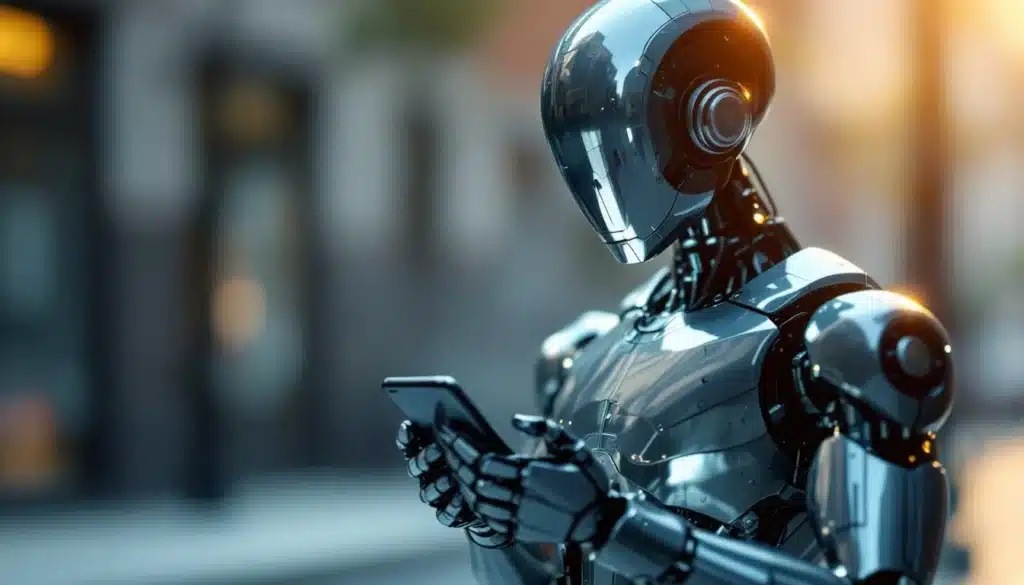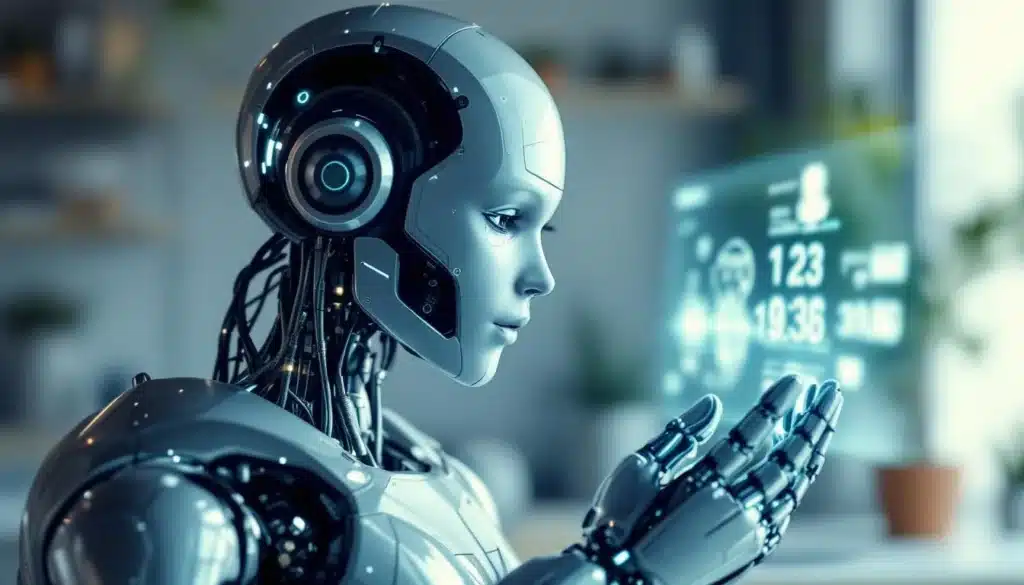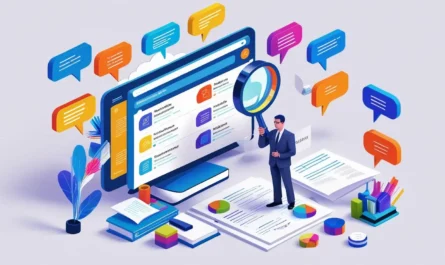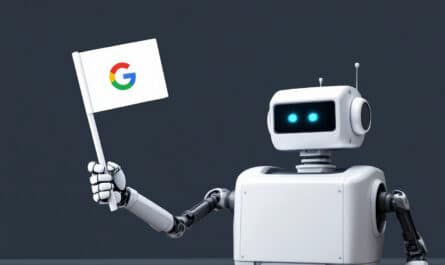You’ve probably already chatted with a chatbot without even realizing it: this computer program invites itself onto websites, into applications and sometimes even into your pocket via instant messaging. Somewhere between cutting-edge artificial intelligence and a discreet virtual assistant, conversational software is gradually transforming the way we interact with machines. But what exactly is a chatbot, how does it work and what uses are emerging today? Let’s dive into the fascinating world of automated dialogue between human and digital agent.
The basics of a chatbot: definition and operation
A chatbot, or conversational agent, is a software application that enables a user to exchange messages with a machine in a “natural” way. The purpose of this computer program is to simulate a human conversation, answering questions, guiding users through procedures or providing entertainment, depending on the context.
Behind this apparent simplicity, several technologies come into play. At the heart of the chatbot‘s mechanics are systems capable of processing natural language. These convert sentences written by the user into instructions that the conversational software understands and then translates into appropriate responses. Some agents use advanced artificial intelligence to dynamically adapt to the dialogue, enriching their knowledge base with each user interaction.
How does automated dialogue work?
The effectiveness of an automated dialogue depends on the chatbot ‘s ability to decode the user’s intention. To do this, it analyzes the text received using different linguistic models, then selects the most relevant response from its library or generates a new sentence usingartificial intelligence.
User interaction varies greatly according to thevirtual assistant‘s level of autonomy: some are content to propose predefined options, while others understand freely formulated queries and are able to bounce back even from unexpected wording. The magic often lies in this impression of fluidity, where the conversational software seems to be conducting a genuine human conversation.
The main technologies used
To bring such an experience to life, a modern chatbot relies on several complementary technological building blocks. Automatic natural language processing (NLP ) breaks down sentences, detecting keywords and intentions. At the same time,machine learning algorithms refine reactions to messages based on the history of previous exchanges.
Broadly speaking, there are two main categories: chatbots based on fixed scripts, and those incorporating scalable artificial intelligence. The former are robust, but limited to standard scenarios, while the latter offer a diversity of dialogs close to authentic user interaction.
Simple chatbot versus intelligent chatbot
The major difference lies in autonomy and fine-tuned dialogue comprehension. A simple chatbot follows a highly structured logic tree and doesn’t really process natural language: it often requires precise commands or recognizes only certain key expressions.
Conversely, a conversational agent equipped with artificial intelligence learns continuously through massive analysis of textual data. It identifies new intentions and adapts its discourse to the user’s personality and context. The result is much more natural exchanges, sometimes comparable to a real human conversation.
Where do you use a virtual assistant today?
The use of virtual assistants has soared in recent years. They can be found in the customer service departments of major retailers, as well as on government websites. The aim? To provide rapid response, 24/7 availability and a smoother user experience.
When it comes to applications, the possibilities are multiplying. Conversational software now guides travel bookings, guides product selection, assists with training registrations, or takes your medical requests in complete confidentiality. The chatbot becomes an advisor, a secretary or a personalized consultant, depending on the user’s needs.

Concrete examples of current uses
Here are a few situations where integrating a chatbot significantly improves the experience:
- 💬 Online customer service: immediate assistance and rapid problem resolution 24/7
- 🛒 O nline sales: personalized recommendations during the purchasing process
- 📅 Appointment scheduling: autonomous diary management and automatic reminders
- 🎓 Elearning: educational support for learners outside normal working hours
- ⚕️ Medical assistance: referral to reliable resources or management of the first symptoms transmitted by message
Each domain develops its own set of questions/answers adapted to the target audience. This flexibility makes chatbots an invaluable tool for boosting user satisfaction and engagement on all kinds of digital platforms.
Area of use comparison table
| 🏢 Domain | 🔍 Main function | ⏳ Key benefit |
|---|---|---|
| E-commerce | Recommendations, order tracking | Time-saving for the customer |
| Health | Orientation, pre-diagnosis | Immediate support |
| Human resources | Sorting applications, FAQ answers | Automation of repetitive tasks |
| Training | Interactive teaching aid | Increased participant motivation |
What are the advantages and challenges of chatbots?
Opting for conversational software has a number of well-known advantages: economies of scale, continuous accessibility for users, reduced burden on human teams. These computer programs also make it possible to offer a much more personalized experience, as each user interaction is memorized and analyzed to refine subsequent advice.
Nevertheless, challenges remain. A limited chatbot could frustrate users if they don’t understand the real intent, or if the responses generated seem unnatural. The integration of high-performance artificial intelligence is sometimes costly, and requires regular adjustments to avoid bias or misunderstanding. There is also the question of protecting the data exchanged during the human-machine conversation.
List of main benefits
- 🤖 Total availability: answers provided continuously, including at night or on public holidays
- 👥 S imultaneous handling of several callers: no waiting compared to a conventional telephone service
- 🌐 Multi-channel access: use on website, social networks or mobile application
- 💡 Increased efficiency: pre-screening of simple requests before transfer to a human expert
The successful integration of an automated dialog will therefore depend as much on the technical quality of the chosen solution as on the care taken with the conversational scenario envisaged.
Some limitations to bear in mind
- 🧩 Lack of empathy in some unexpected responses
- ⏱ Risk of distracting the user if too many steps or menus appear
- 🔒 Confidentiality and data protection when exchanging sensitive information
Despite these points of vigilance, the ongoing evolution of natural language techniques promises increasing sophistication for future generations ofvirtual assistants.

Key questions about chatbots
What’s the difference between a chatbot and a virtual assistant?
A chatbot is mainly used to interact via short messages, often to answer specific requests or guide a user through a task. A virtual assistant offers a wider range of functionalities: it can manage the calendar, control devices or organize reminders. Both are based on similar principles of conversational software, but the virtual assistant is aimed more at daily support on different media.
- 🤖 Chatbot: text dialogue, targeted responses
- 🧑💼 Virtual assistant: multi-tasking, broad integration into digital life
What kinds of businesses can benefit from chatbots?
All kinds of organizations benefit from integrating chatbots: retail outlets, government agencies, healthcare establishments, schools and SMEs. Every structure can benefit from automated dialog to better handle frequent requests, offer a permanent welcome and collect user feedback without overloading teams. Small businesses in particular benefit fromautomation, as it boosts productivity while enhancing customer relations.
- 🏪 Shops: after-sales support, shopping guide
- 🏥 Medical facilities: orientation and awareness
- 🎓 Educational sector: interactive tutoring
Do chatbots completely replace human advisors?
The aim of chatbots is not to do away with human interaction, but to complement its limits. They take care of simple or repetitive questions, leaving experts to deal with complex issues or those requiring empathy. Many organizations are banking on a complementary approach: chatbot on the front line, then relaying to a human as soon as the need arises.
- 👉 Automation of standard tasks
- 🤝 Referral to an advisor for special cases
| 💬 Managed tasks | 🤖 Chatbot | 🧑 Human advisor |
|---|---|---|
| FAQ answer | Yes | Sometimes |
| Emotional management | No | Yes |
| Complex treatment | Rarely | Yes |
How to improve the performance of conversational software?
To perfect conversational software, you need to regularly train theartificial intelligence with recent and diversified data adapted to the target activity. It’s also important to monitor user feedback in order to adjust the natural language, diversify the scenarios proposed, and maintain a constant technical watch.
- 💾 F requent updates
- 🔍 Behavioral analysis of conversations
- 🛠 Various user tests before going into production






